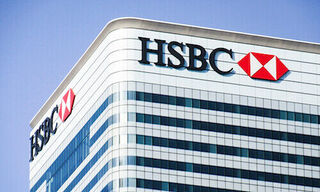The write-down on Credit Suisse's mandatory convertible bonds is occupying the Federal Administrative Court. The SNB could become a star witness.
For the Swiss Financial Market Supervisory Authority (Finma), the rescue of Credit Suisse March has legal repercussions. As part of the action, the regulator ordered the bank to write down mandatory convertible bonds (AT1) worth 15.8 billion ($17 billion) francs to immediately strengthen the equity of the battered institution.
UBS will make a handsome accounting profit into the billions as a result, but hundreds of investors filed lawsuits related to losses suffered from the write-off, including the pension fund of the Swiss retail giant Migros. The Federal Administrative Court is now involved.
The legal wrangling over the interpretation of the bond prospectus continues. Investors are upset that as bondholders they've lost their entire investment, whereas shareholders lost «only» lost two-thirds of their investment. At issue is that stockholders essentially got to cut in line ahead of bondholders which is against the conventional rules of who gets paid when a firm goes bust.
Not Pulling the Trigger
Today, the Swiss National Bank (SNB), which was closely involved in the bailout, released an assessment of the events leading up to the write-off in its annual Financial Stability Report, commenting in detail on the crisis at Credit Suisse.
The central bank concluded that until the bailout in March, Credit Suisse avoided pulling the «trigger» for AT1 securities as it continued to service interest payments on outstanding bonds and redeemed AT1 bonds at the earliest possible date. All this its operational and financial situation continued to darken.
Robust Tier 1 Ratio
Even in mid-March, the bank still had a Tier 1 capital ratio of 14 percent, well above the regulatory minimum of 10 percent and double the quantitative trigger of 7 percent. Had it reached that point, the AT1 bonds would have been converted into equity. Based on that, Finma concluded a core capital ratio of 14 percent was in effect, as the SNB now confirms.
The SNB considers the write-off to be legal. Even with sufficient equity capital market confidence in Credit Suisse crumbled, and when confidence threatened to wane completely, the authorities had to intervene. With the promise of support from the federal government, conditions were met according to which the AT1 bonds could be written off.
Whether this argument is accepted by the Federal Administrative Court remains to be seen. However, the SNB itself is no longer entirely comfortable with the current regulations on the capitalization of large banks. As Thursday's report also noted, the crisis has shown it's not enough to simply meet capital adequacy requirements.
Rather, a bank's prospects are also crucial in assessing its resilience, and the question of profits and the institution's ability to raise capital. Overconfidence in regulatory capital ratios can lead to an underestimation of the need urgent for corrective measures, the SNB said.



























